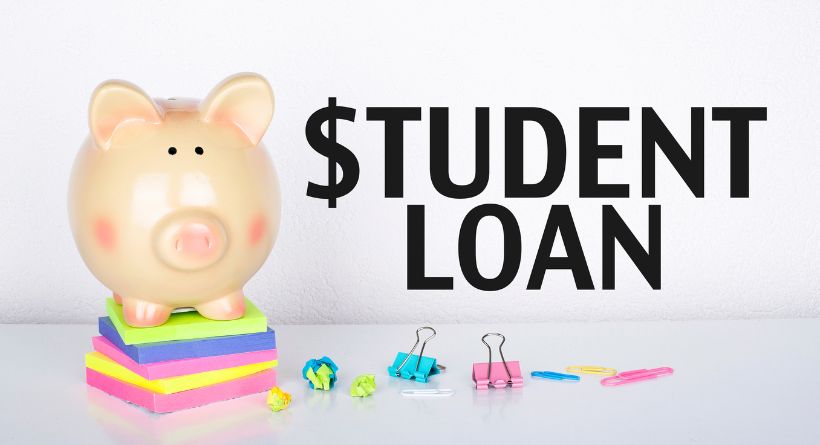In the appropriate situations, refinancing student loans might result in significant savings. This is how it goes: Your student loans are paid off by a new private company—typically a bank, credit union, or online lender—and you get a new loan with an interest rate based on your credit score, income, and other factors.
If you have a steady income, good or exceptional credit, or a co-signer who does, and your present loans have interest rates that are high enough that you might benefit from a lower rate, you should think about refinancing your student loans. You may even be able to refinance federal PLUS loans that your parents took out to assist with your education costs, freeing them from the burden of repayment.
Based on criteria including interest rates, accessibility to borrowers, and hardship repayment alternatives, we’ve listed below the top student loan refinancing lenders for those who qualify. There are occasional late fees, but none of the lenders on our list levy origination or prepayment costs. We solely assessed each company based on its student loan refinancing option even if they sometimes provide a separate refinancing solution for borrowers of parent loans.
Tips for Comparing Student Loan Refinance Lenders
Since saving money on interest is the main reason for refinancing, you should probably go with the lender that gives you the lowest rate you are eligible for. Variable rates are often less expensive than fixed rates, but because they are subject to future increases, you should only choose one if you intend to promptly repay the loan.
Refinance loans aren’t obliged to provide the same consumer safeguards as federal loans, such as income-driven repayment schedules or forgiveness, similar to private student loans for students. But some refinancing lenders provide borrowers who are having trouble making payments longer than the customary 12 months of forbearance throughout the loan term, as well as extra loan modification alternatives.
Refinancing is usually appropriate for those with high wages and steady employment. But things may change in life. Choose a lender with a more lenient forbearance policy if you anticipate needing to suspend payments or reduce your monthly payment.
Additionally, if you decide to refinance with a co-signer, choose a lender that has a co-signer release policy so you may assume the whole repayment responsibility whenever it is feasible. This will shield your co-credit signer’s from any damage that might result from missed payments.
Methodology
We obtained information from 16 of the largest lenders in the student loan refinancing industry, and we graded them based on 15 different data points, including interest rates, fees, loan terms, hardship choices, application requirements, and eligibility. Based on those that received three stars or more, we selected the top 10 to present.
The following is the weighting assigned to each category:
- Hardship options: 30%
- Eligibility: 18%
- Loan terms: 18%
- Application process: 16%
- Interest rates: 13%
- Fees: 5%
The number of months of forbearance that were available, hardship repayment options beyond traditional forbearance, the availability of in-school deferment, accessibility to borrowers without a bachelor’s degree, the time to default, the disclosure of credit score and income requirements, and other factors were among the specific characteristics that were taken into account within each category.
The best results were obtained from lenders that provided interest rates below 7%, longer forbearance than the usual 12 months, interest rate reductions more than the usual 0.25% for automated payments, no late penalties, and numerous loan periods up to 15 years. We think that in order to benefit fully from refinancing, borrowers should choose the shortest loan term possible, and a 20-year term may restrict interest savings.
Partial points were sometimes given to lenders, and a maximum of 3% of the final score was left up to editorial judgement depending on the quality of the consumer-friendly elements provided.
Refinancing my student loans: Should I?
Financial background, interest rates, and payback requirements are the three factors to take into account when selecting whether to refinance.
Decide first whether you meet the requirements. A minimum credit score of 650 is often required by student refinancing lenders. Additionally, you’ll often need to demonstrate a steady income, a modest debt-to-income ratio, and a track record of making your debt payments on time.
Possibility of refinancing now consider the interest rates on your outstanding debts. Using the prequalification tools on lenders’ websites, you may check whether they’re much higher than the rate you’ll probably receive when you refinance. If so, refinancing could make sense for you.
But keep in mind that you may lose access to federal programmes like flexible forbearance, income-based repayment, and public service debt forgiveness if you refinance federal student loans (PSLF). Consider your options carefully before refinancing if you depend on these programmes or believe you may in the future.
How to Refinance Student Loans
If refinancing makes sense for your circumstances, you may get started right away. How to refinance your debts is as follows:
1. Do your research before applying
You may prequalify for a loan from the majority of refinance lenders. To accomplish this, you must submit a few pieces of personal information, and the lender will do a soft credit check (which has no effect on your credit score) before estimating the fixed and variable interest rates for the loan you want and displaying them to you. Do this with many lenders to see who could have the finest offers.
2. Submit a request
Make a formal application after you’ve determined the lender you wish to deal with. Since this is a more detailed form, you may need to provide more proof of your income and other information. The lender will next authenticate your details by doing a rigorous credit check. You will be sent a summary of the final loan terms if you are accepted. If everything appears fine after going through the papers, you may sign the loan application.
3. Verify that your previous debt has been paid off, then begin payments
Your former loan will probably be immediately repaid by your new lender. However, until you hear that it has been paid off and your account has been closed, keep paying your previous debt. After that, you will begin paying your new lender on your refinanced debt on a regular basis.
Frequently Asked Questions
What does “co-signer release” mean?
After a set number of payments have been received, some refinancing lenders offer to relieve the co-signer from the loan. Due to the principal borrower’s poor payment history, this may shield the co-signer from a credit impact. Check your loan paperwork if you want to employ co-signer release to see if it would be feasible (in 36 months, for example) and any extra conditions you may need to satisfy.
How many times may student loans be refinanced?
Although there isn’t a restriction on how often you may refinance student loans, after a few attempts, the procedure is probably no longer worthwhile. The primary goal of debt refinancing is to get a reduced interest rate, albeit you could eventually discover that your current rates are the lowest they can be.
What credit score is required for student loan refinancing?
Although each lender has a different minimum credit score requirement, as a general guideline, you’ll need a score of roughly 650 to be eligible. However, a credit score of around 720 or above is a typical benchmark in order to achieve the best interest rates offered.







